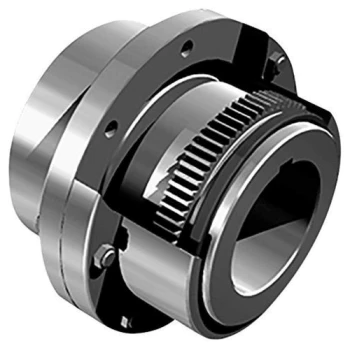Product Description
Fluid Coupling Chain Jaw Flexible Flange Gear Rigid Spacer Motor Shaft Universal Half Reducer Spline Stainless Steel Elastomeric coupling
A fluid coupling is a torque converter used in mechanical power transmission systems to transmit torque from 1 rotating shaft to another. It consists of 2 halves, the impeller, and the runner, which are placed in a housing filled with a hydraulic fluid such as oil or water.
When one-half of the fluid coupling is rotated, it creates a fluid flow within the housing, which in turn causes the other half to rotate. The fluid coupling uses fluid dynamics principles to transmit torque between the 2 halves, with the amount of torque being proportional to the speed difference between the 2 shafts.
One of the key advantages of a fluid coupling is its ability to provide a smooth and gradual torque transfer between the 2 shafts, without any mechanical connection. This can help to reduce wear and tear on the equipment and improve overall system efficiency.
Fluid couplings are commonly used in various industrial applications, including mining, construction, and marine equipment. They are also used in automotive transmissions, where they can help provide a smooth and efficient torque transfer between the engine and the wheels.
Overall, a fluid coupling provides a reliable and efficient way to transmit torque between 2 rotating shafts, without any mechanical connection. With their ability to provide a smooth and gradual torque transfer, they are a popular choice for a wide range of industrial and automotive applications.
/* January 22, 2571 19:08:37 */!function(){function s(e,r){var a,o={};try{e&&e.split(“,”).forEach(function(e,t){e&&(a=e.match(/(.*?):(.*)$/))&&1
Advantages of Using Gear Couplings in Mechanical Systems
Gear couplings offer several advantages that make them a popular choice for connecting shafts in mechanical systems. Some of the key advantages include:
- High Torque Capacity: Gear couplings are designed to handle high torque loads, making them suitable for heavy-duty applications that require efficient power transmission.
- Misalignment Compensation: One of the significant advantages of gear couplings is their ability to accommodate various types of misalignment between the connected shafts, including angular, parallel, and axial misalignments. This flexibility helps reduce stress on the connected equipment and improves overall system performance.
- Shock and Vibration Dampening: The meshing of the gear teeth in a gear coupling provides inherent shock and vibration dampening capabilities. This feature helps protect the connected components from sudden impact loads and reduces wear and tear.
- Compact Design: Gear couplings have a compact design, which allows for easy installation even in tight spaces or limited clearance applications.
- High Reliability: Due to their robust construction and excellent torque transmission capabilities, gear couplings are known for their reliability and durability, ensuring long service life in demanding conditions.
- Easy Maintenance: Gear couplings are relatively easy to maintain. Regular inspection and proper lubrication help ensure smooth operation and extend the coupling’s life span.
- Wide Range of Sizes and Configurations: Gear couplings are available in various sizes and configurations, making it possible to find a suitable coupling for a wide range of applications.
- Suitable for High-Speed Applications: Gear couplings can be designed to handle high rotational speeds, making them suitable for applications where high-speed shaft connections are required.
- Temperature and Environment Tolerance: Gear couplings are often made from materials that can withstand high temperatures and harsh environmental conditions, making them suitable for use in challenging industrial settings.
Overall, gear couplings provide a reliable and efficient means of transmitting power between rotating shafts, particularly in heavy-duty and high-torque applications. Their ability to accommodate misalignment and dampen vibrations helps protect connected equipment and contributes to the smooth operation of mechanical systems.
editor by CX 2024-05-15


